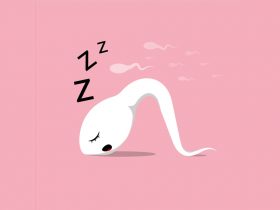The Principle of Garment Design

Let’s begin with the balance principle. There are several different principles that fashion designers use to make their designs more pleasing to the eye. These principles are balance, symmetry, decorative design, and rhythm. These principles will help you create the perfect outfit for your customers. Let’s look at a few examples.
Pleasing balance
Balance can be achieved through several different elements of the design process, including structural and decorative elements. The placement of these elements can be controlled to introduce balance into a garment. For example, designers can create a pleasing design by contrasting trims and emphasizing one area. Similarly, the proportions of the parts of a garment should relate to the invention’s structure.
One way to create informal balance is to use diagonal lines or off-center closings. This will give your design a visual credit instead of a rugged look. Another way to create informal balance is using a darker skirt over lighter pants. This may make you appear shorter, but it will also emphasize irregularities in your body. For information about the principle of garment design, visit sites like https://www.lycra.com/en/business/search-technologies/lycra-shaping-technology.
Decorative design
Decorative design is a principle of garment designing that involves using color and pattern to add to the beauty of the garment. It is an integral part of the garment’s structure and aims to provide balance and harmony. There are three basic principles of decorative design. They are proportion, scale, and emphasis.
A well-designed garment has a basic form and is appropriate for the person wearing it. It also suits the theme and occasion for which it is intended. Decorative design involves using different materials and styles, and a designer’s aesthetic sense and technical knowledge will play a massive role in the invention’s success.
Rhythm
Rhythm is a design principle that adds visual appeal to a garment. It can create an overall sense of order, sophistication, and beauty when applied correctly. This is achieved by implementing elements with different weights and textures and using patterns and colors. Using this principle, a garment’s design can have a specific rhythm, and it is crucial to consider the fabrics used.
The principle of proportion can be applied to a variety of design disciplines. It is often applied to fashion design, where it is used to emphasize the shape of the body. It is often used in conjunction with style lines and motifs. Using these elements in conjunction with the principles of unity and proportion can create an exciting and powerful look.
Rhythmic repetition
Repetition has a powerful effect on a design and may be achieved in several ways. It can be achieved through regular garment features, such as a pleated skirt or a patterned fabric. Another technique is graduation, which involves working parts of varying sizes. For example, gathers at the center of a yoke can become fuller and broader and gradually decrease in size. This helps the eye follow different patterns through the design. It can also be used to draw attention to certain aspects of the body.
Rhythmic repetition is essential in fashion design. To make an outfit or garment look good, designers should use repetition to guide the eye throughout the procedure. This can be accomplished by alternating different design elements or using the same design element at other points.
Rhythmic recurrence
Rhythmic recurrence is a visual design element that is important in fashion. A combination of patterns, textures, shapes, or colors can lead the eye through a design. The repetition of a design element also creates contrast. For example, two different fabrics, colors, patterns, or even two different types of material, can create a robust visual rhythm.
A garment’s design can incorporate various rhythms, depending on how it is constructed. For instance, a regular rhythm may place one or more elements with a regular interval. Alternatively, it can be a periodic repetition of a particular characteristic. It may also contain variations in shape, color, and size, which can add to the complexity of the design.
Structure
The structure of a garment is a fundamental aspect of garment design. It involves arranging pattern components and different types of lines to produce a uniform appearance. The format can be plain or embellished, depending on the need. It is essential for the finished appearance of a garment, and it requires a good understanding of design principles. Lines are powerful and often play tricks on the eye, so they should be used with care. Both straight and curved lines are often used in garment design.
The structured design also includes the overall look of a garment, including its form, color, texture, and construction details. It can be simple or complex, depending on the materials used. Structured garments often contain many components, such as seams, yokes, pockets, frills, and tucks.












